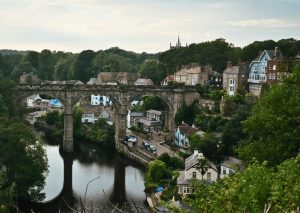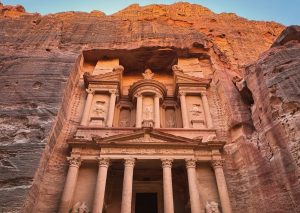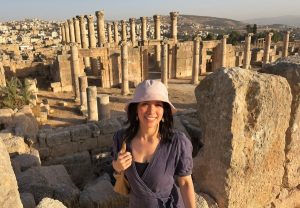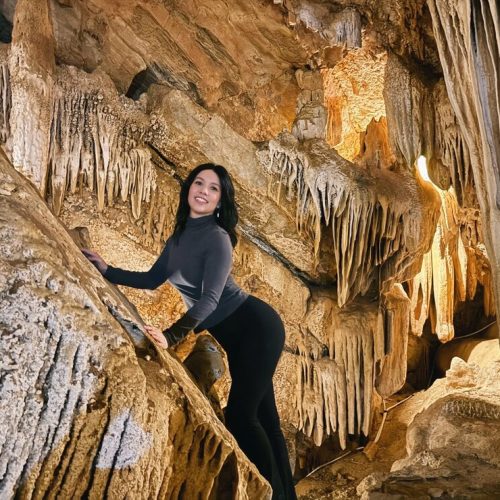Rome is world-famous for its ancient Roman architecture. You don’t need me to tell you about the Colosseum, the Roman Forum and the Pantheon. There are a million blogs and guide books out there already doing that so I’d like to shift your attention to recent architectural works.
All of these buildings were built in the 20th and 21st Century. They offer a striking contrast to the ancient structures that have become synonymous with Rome.
Also, if design is your thing, feel free to dip into my archive on architecture.
The MAXXI

Architect: Zaha Hadid
I love this building. It’s home to the MAXXI (Museum of Art from the 21st Century). Designed by Zaha Hadid, the first woman to win the Pritzker Architecture Prize (2004), it opened in 2010 to universal acclaim.
Instead of classical columns and pediments and relief carvings of ancient gods, MAXXI features sweeping curves of moulded concrete and glass. It doesn’t sit, it flows. Unlike a traditional museum, the building isn’t organised with rectangular galleries with a linear navigation. Instead, it’s a network of paths, levels, and bridges. Hadid envisaged and designed a space intended to be explored like a landscape. She wasn’t about following convention, but rather breaking it.
It houses important contemporary works by Italian and International artists, including William Kentridge, Anish Kapoor, and Alighiero Boetti.
Address: Via Guido Reni
Parco della Musica

Architect: Renzo Piano
Inaugurated in 2002, this music complex is now the most-visited music venue in Europe, and second in the world after the Lincoln Center in New York. Built by famed Italian architect, Renzo Piano, it is located at the foot of the Parioli district adjacent to the Olympic Village.
Currently, Parco della Musica is the largest space dedicated to music in Europe. The structure is made up of three concert halls, reminiscent of futuristic-looking beetles. However, some people see other things – affectionately calling them ‘the blobs’, ‘the computer mice’ and ‘the turtles’.
The halls overlook an open-air amphitheater known as the Piazza of “La Città della Musica” “The Music City Piazza”. The ultra-modern design merges beautifully with the tradition of the materials used to build it: travertine marble and Roman brickwork. If you are planning a trip to Rome, make sure you check out the program which is always rich of internationally acclaimed artists.
Address: Via Pietro de Coubertin
Jubilee Church

Architect: Richard Meier
I love it when something breaks through the mould of convention, and the Jubilee Church is definitely one of them. Designed by Richard Meier, and commissioned by the Vatican. It was one of 50 churches commissioned in the 1990s and early 2000s as part of the “Churches for the Year 2000” project. The project aimed to bring contemporary architecture into the Catholic Church.
The church’s most iconic feature is its trio of sweeping concrete sails, curved and rising asymmetrically almost like the wings of an angel. Meier added, “These three walls discreetly refer to the Trinity.” Interesting to note is the material. The sails are made from self-cleaning white cement. This is a titanium dioxide-based concrete, developed to reduce maintenance and help neutralize air pollutants.
In addition are the large glass surfaces that guarantee a generous flow of natural light, located both at the top and at the main and back facades. By choosing a white building material and large windows for light, it enhances a vision of purity associated with religion and churches.
Richard Meier was the winner of the Pritzker Architecture Prize in 1984, the highest award achieved within the field of architecture.
Address: Piazza Largo Terzo Millennio
EUR New Convention Centre

Architect: Studio Fuksas
Fuksas’ project is the response to a competition held in 1998 by the Council of Rome to reinforce the international image of the Italian capital in the panorama of congress and international meetings. Opened in 2016 in the EUR district, this major complex has been named ‘the cloud’, a moniker that references an independent cocoon-like structure situated in the middle of the building.
The complex hosts auditoriums, exhibition spaces, and a hotel – it’s enormous. The stats are impressive: the construction utilised 37,000 tons of steel. That’s the equivalent weight of four and a half eiffel towers. Meanwhile, it is also made up of 58,000 metres of glass. That’s enough to cover the surface of 10 football pitches!
Address: Viale Asia
The Italian Civilisation Palace

Architects: Giovanni Guerrini, Ernesto Bruno Lapadula and Mario Romano
Also known as the “Palazzo della Civiltà del Lavoro” or more jokingly, “Colosseo Quadrato” which translates to the Square Colosseum. It is located in EUR, which is a very architecturally interesting place in Rome.
EUR stands for “Esposizione Universale Roma” which translates to the Universal Exposition of Rome. It refers to a world’s fair that was supposed to take place in 1942, celebrating 20 years of Mussolini’s Fascist regime. But history had other plans. The event never happened. World War II was raging. Eventually the people denounced fascism.
The unfinished district sat half-built, a ghost town of marble and ambition. In a move towards post-war urban planning, the Italian government decided to redeem and repurpose the area. But rather than demolish it (as was done with Nazi structures in Germany), a decision was made to slowly develop EUR into a business district. It is now home to government ministries, corporate HQs, and even Rome’s only skyscrapers.
The area has a variety of modern architecture but Colosseo Quadatro is perhaps the most iconic – and today it belongs to the well-known fashion house, Fendi.
Address: Quadrato della Concordia
Trivia time: It’s also a favorite filming location for directors who want something dystopian, cold, or eerily elegant (think: The Great Beauty, Spectre, Michelangelo Antonioni’s work).
Where to stay in Rome
If you’re reading this article, the likelihood is that you’re into design. If you’re planning a trip to Rome, there are several hotels that focus on incorporating art and design into your trip. However, a night in these hotels don’t exactly come cheap.
Hotel Vilòn – Milan-based Architect and designer Giampiero Panepinto has created a series of undeniably stylish rooms that draw up a playful blend of architectural styles ranging from Rococo right up to mid-century modern.
G-Rough – Describing its ethos as ‘rough-luxe’, this boutique hotel showcases original, vintage pieces by leading Italian designers against a stripped-back historic building catering for only 10 rooms. While some elements embody a shabby-chic aesthetic, other aspects such as the bathrooms gleam with decadence.
J.K. Place Roma – This townhouse is seriously chic and elegant from top to bottom. Complete with modern art, romanesque statues, contemporary furniture and classic furnishings made from luxury fabrics and materials.
Further reading: Architecture in Porto: 5 Contemporary Buildings You Should See










